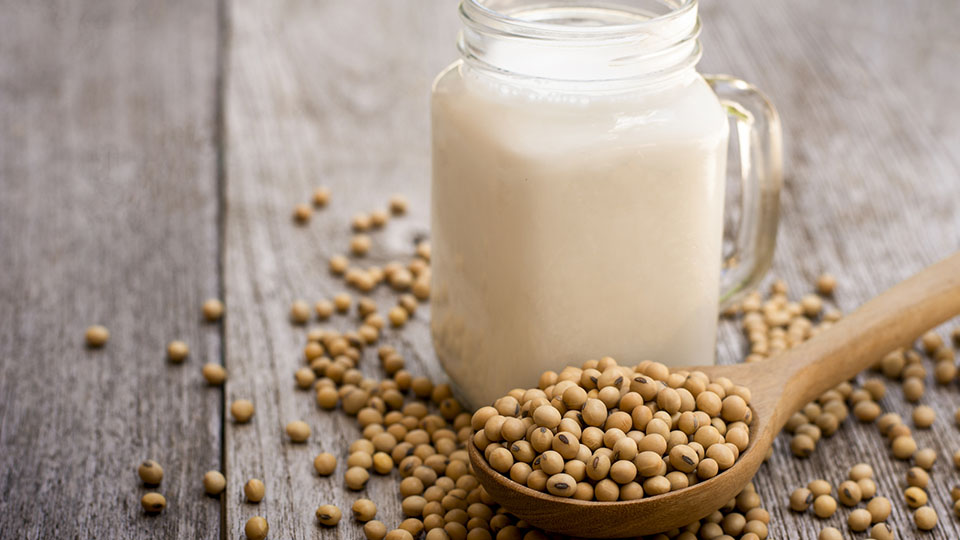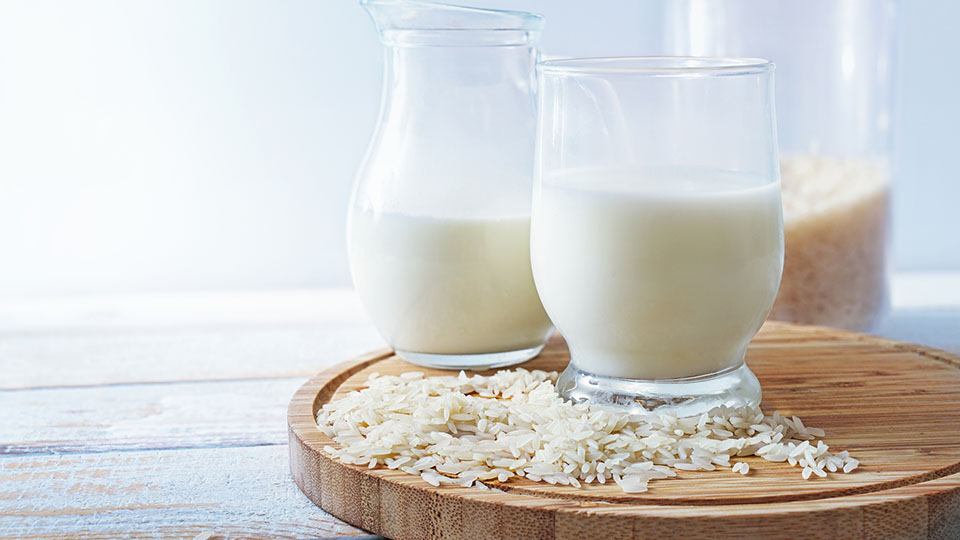Which Type of Milk is Healthiest?

Whole, non-fat, reduced, skimmed, almond, soy, rice — the grocery store milk aisle keeps expanding. We've come far from the days of simply choosing plain or chocolate. The many options can seem overwhelming when all you want is something to pour over your morning cereal or put in your coffee. So, what’s the skinny on milk?
What are the Basics of Cow Milk?
The USDA recommends about three cups of milk a day for adults and children age 9 and older to help meet daily dietary needs for nutrients such as bone-strengthening calcium and vitamin D. But what type of cow's milk is best for you? It depends on what you want and need in your diet.
Nearly every store carries whole, reduced-fat and skim milk, but some might not know what those terms really mean. When milk is processed, different levels of fat can be taken out (or skimmed).
- Whole milk is cow’s milk that hasn’t had its fat content stripped. The milk retains its fat (about 3.5 percent) and is slightly thick.
- Reduced-fat milk retains 2 percent of fat.
- Skim milk, (also known as fat-free or non-fat milk) contains no fat at all. This processing lowers calories and slightly alters the milk's taste.
Reduced-fat and skim milk lose nutritional benefits when processed. Most producers then fortify their milk with solids to restore vitamins and thickness, although fortification is controversial. In addition, the practice of giving cows added growth hormones (rBST) to aid in milk production is also contentious.
Some milk producers have started offering rBST-free milk that comes from grass-fed, free-range cows to address these concerns. According to the Cleveland Clinic, not only do grass-fed cows make milk with significantly more beneficial omega-3 fatty acids, but because they are less stressed than conventionally raised cows, they also tend to produce more milk and richer milk.
What are the benefits of cow milk?
Milk provides several key dietary requirements, but the levels of nutrients in each milk type can vary slightly.
Reduced-fat and skim milk retain roughly the same amount of protein as whole milk but lose some of their vitamin content during processing and fat removal. Vitamins A and D, which are fat-soluble, are added back through fortification.
Here is a breakdown of the amount of protein, potassium and calcium found in a single serving (one cup) of each type of milk.
- Whole milk contains 8 grams of protein, 9 percent of your daily value of potassium, and 27 percent of your daily value of calcium.
- Reduced-fat milk contains 8 grams of protein, 9 percent of your daily value of potassium, and 29 percent of your daily value of calcium.
- Skim milk contains 8 grams of protein, 10 percent of your daily value of potassium, and 29 percent of your daily value of calcium.
Here is a breakdown of the amount of vitamin A and vitamin D found in a single serving (one cup) of each type of milk.
- Whole milk contains 5 percent of your daily value of vitamin A and 24 percent of your daily value of vitamin D.
- After fortification, reduced-fat milk contains 9 percent of your daily value of vitamin A and 29 percent of your daily value of vitamin D.
- After fortification, skim milk contains 10 percent of your daily value of vitamin A and 25 percent of your daily value of vitamin D.
Which is Better for Health?
Reduced-fat milk and skim milk have fewer calories and higher amounts of vitamins than whole milk (thanks to fortification). They also have less saturated fat, which has been shown in studies to raise your "bad" cholesterol and put you at a higher risk for heart disease. But reduced-fat milk and skim milk often contain more added sugar than whole milk, which is also a no-no.
While skim and reduced-fat milk might seem appealing to those who are trying to lose weight, there is a lot of debate as to whether they are more beneficial than whole milk for weight loss.
- The large amount of added sugar in skim and reduced-fat milk is a problem for some.
- Others take issue with possible health implications of the fortification process.
- Studies say the saturated fat in whole milk might help you feel more satisfied and full longer than drinking reduced-fat or skim milk.
Whichever type you prefer, when picking the type of cow's milk that's the best fit for you, weigh the benefits of each and determine which one fills the requirements of your personal nutritional needs and preferences.
What are the Basics of Milk Alternatives?
If dairy isn’t an option for you (based on your taste preference, or if you are a vegan, vegetarian or have lactose restrictions) there are several milk alternatives available on the market. Like reduced-fat and skim milk, some vitamins and nutrients are usually added to the milk alternatives through fortification, although with non-dairy components.
With all varieties, choose the unsweetened versions. Milk and milk alternatives can double their amount of sugar if they are sweetened with added sugars.
What is Almond Milk?
Almond milk is plant-based and made by grinding almonds into a pulp. The pulp is mixed with water and then strained. Almond milk is consumable by vegans and is naturally lactose-free.
Even though almonds are a good source of protein, almond milk is not. A cup of unsweetened almond milk has about 1 gram of protein compared to 8 grams of protein per cup of cow's milk. But on the plus side, almond milk is much lower in calories and sugar compared to cow's milk and contains very little saturated fat.
It's a good source of vitamin A and potassium and is often fortified to be a good source of vitamin D. Almond milk naturally has calcium and is also fortified with it, which makes it substantially higher in calcium per serving than cow's milk.
What is Soy Milk?
Soy milk is created by the suspension of soybean flour in water. This widely used milk alternative is plant-based and consumed by both vegans and the lactose-intolerant.
It's a good source of protein (as much as cow's milk), and is much lower in calories than whole milk (it has about the same calories as reduced-fat milk). It also contains very little saturated fat.
Soy milk is a good source of vitamin A and potassium, and is often fortified to be a good source of calcium and vitamin D.
However, soy is also a common allergen, so people who are allergic to soy should not drink soy milk. Also, most of the soy in the U.S. comes from genetically modified plants, which is a concern to some. In addition, too much soy may be a problem for people with thyroid disease or other conditions.
What about soy milk and breast cancer? The latest research is mixed. Says the Susan. G. Komen website, "The effects of soy in people with breast cancer are unclear. Some research finds that soy might ‘feed’ certain breast cancers because it can act like estrogen. Other studies have found that soy seems to protect against breast cancer. The difference in effects might have something to do with the amount taken. Because there isn’t enough reliable information about the effects of soy in women with breast cancer, a history of breast cancer, or a family history of breast cancer, it’s best to avoid using soy until more is known."
What is Rice Milk?
Rice milk is made from milled white or brown rice. It's the least likely of all of milk products to cause allergies, which makes it a good choice for people with allergies to dairy, soy, or nuts.
Rice milk can be fortified to be a good source of calcium, vitamin A, and vitamin D. However, rice milk is high in sugar, carbohydrates and calories and is low in protein.
The Bottom Line
Milk can be a powerhouse component of a healthy diet. It’s best to determine your personal dietary needs when picking the milk type that is right for you. As always, consider things like your current weight, your current diet, your level of activity and other factors like age.
Consult a dietitian for any questions you have about your personal nutrition, your dairy intake, alternative non-dairy resources and any changes you want to make in your diet.






